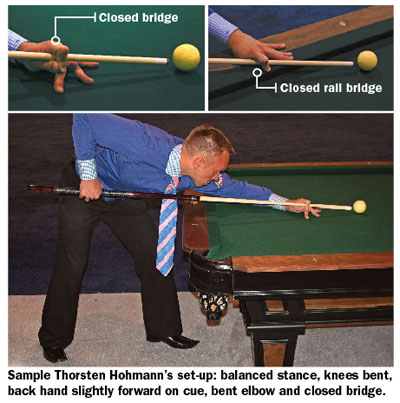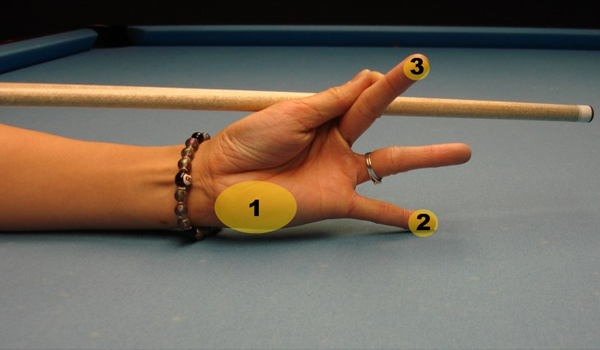Disclaimer: This article is intended for general informational purposes about billiards techniques. It should not replace professional coaching or formal training. Individual results may vary depending on skill level and practice.
Mastering Hand Skills in Billiards: The Essential Guide to Precision and Control
When it comes to billiards, success is not only about strategy and shot selection—it is also about how you use your hands. In fact, the way a player positions, measures, and controls their hands can make the difference between a missed shot and a winning break. From creating stable bridges to using natural hand measurements as a guide, mastering hand skills is a foundation every billiards player should develop.
In this article, we will explore the most important hand skills in billiards, including bridge techniques, grip, hand positioning, and even how natural hand measurements can serve as practical tools for improving your game.

The Importance of Hand Skills in Billiards
Billiards is a game of precision, stability, and control. While many beginners focus on cue power or shot angles, professional players know that their hands are the most valuable tools on the table. Good hand skills help players:
-
Stabilize the cue stick
-
Control the speed and spin of the cue ball
-
Accurately measure distances
-
Reduce errors caused by shaky or inconsistent bridges
Simply put, better hand technique leads to better performance.

The Bridge: Your Cue’s Foundation
The bridge is one of the most important hand techniques in billiards. It is the way you place your hand on the table to guide the cue stick. There are two main types:
1. Open Bridge
-
The palm rests flat on the table.
-
The cue runs along the “V” formed between the thumb and index finger.
-
Best for long shots and when maximum visibility of the cue ball is needed.
2. Closed Bridge
-
The index finger wraps over the cue stick.
-
Provides greater stability, especially for powerful shots or applying heavy spin.
-
Often used by professional players when making break shots.
A consistent bridge is key to accuracy. Players should practice forming bridges naturally and comfortably to ensure control during pressure situations.

The Grip: Light but Controlled
One of the biggest mistakes beginners make is gripping the cue stick too tightly. A proper billiards grip should be:
-
Relaxed: The cue should feel like it’s resting in your hand, not being forced.
-
Balanced: Hold the cue toward the back, giving enough room for a smooth stroke.
-
Straight: Avoid twisting your wrist, which can cause the cue to veer off line.
Remember: A loose grip gives the cue a natural swing, which improves accuracy.
Hand Positioning and Body Alignment
Where you place your hands also determines how effective your shot will be. Professional players often focus on three key points:
-
Bridge hand placement: Position it firmly on the table, around 10–12 inches from the cue ball.
-
Grip hand alignment: Keep it in line with the shooting arm, ensuring a straight stroke.
-
Stability: Use your non-shooting hand and body posture to maintain balance, especially on long or angled shots.
Good positioning prevents unintentional movement and gives you confidence when aiming.

Using Hand Measurements as a Tool
One fascinating trick in billiards is using your own hand as a natural measuring tool. As shown in the illustration, different hand positions provide approximate lengths:
-
Index fingertip: ~2.5 cm
-
Thumb width: ~5 cm
-
Fist width: ~10 cm
-
Spread index and thumb: ~15 cm
-
“Shaka” hand sign (thumb to pinky): ~23 cm
-
Elbow to fingertip: ~46 cm
These natural measurements can help players quickly estimate distances on the table without needing a ruler. For example:
-
Measuring cue ball distance from the object ball.
-
Checking how far to position the bridge hand.
-
Estimating angles and spacing for bank shots.
By training your eyes and hands together, you can improve your consistency and decision-making during matches.
Finger Control for Spin and English
Another important aspect of billiards hand skills is the ability to control spin (English) on the cue ball. This is often achieved by subtle wrist and finger adjustments:
-
Top spin: Raise the bridge slightly to hit above center.
-
Backspin: Lower the bridge for a downward strike.
-
Side spin: Angle the cue to strike left or right of the center.
The key is smoothness. Jerked or uneven strokes can cause miscues. Using light finger adjustments while keeping the grip relaxed ensures better spin control.

Practice Drills for Hand Skills
Like any sport, billiards requires repetition to master hand skills. Here are some practice drills:
-
Bridge Stability Drill: Place your bridge hand in position and slide the cue back and forth 20 times without hitting the ball. Focus on smoothness.
-
Soft Grip Drill: Practice hitting the cue ball with the lightest possible grip while maintaining accuracy.
-
Measurement Drill: Use your hand measurements to line up shots, then compare with actual distances to improve your eye-hand accuracy.
-
Spin Control Drill: Hit the cue ball at different points (top, bottom, sides) to observe how spin changes movement.
Practicing these drills for 15–20 minutes daily can dramatically improve your control and confidence.
Mental Connection: Hands and Focus
Hand skills are not only physical but also mental. A steady hand often reflects a steady mind. Players who rush shots or tense up tend to lose control. By focusing on breathing, relaxation, and consistency, you can ensure your hands stay calm under pressure.
Professional players often use pre-shot routines that involve carefully setting the bridge, checking the grip, and aligning the stroke. This mental discipline creates muscle memory, making hand skills second nature during matches.
Conclusion
In billiards, your hands are more than tools—they are the foundation of every shot you make. From creating stable bridges to maintaining a relaxed grip, from precise positioning to using natural hand measurements, mastering hand skills is essential for anyone who wants to elevate their game.
While cues, chalk, and tables may vary, the one constant is the player’s hands. The more control, stability, and awareness you develop, the closer you get to playing like a professional.
